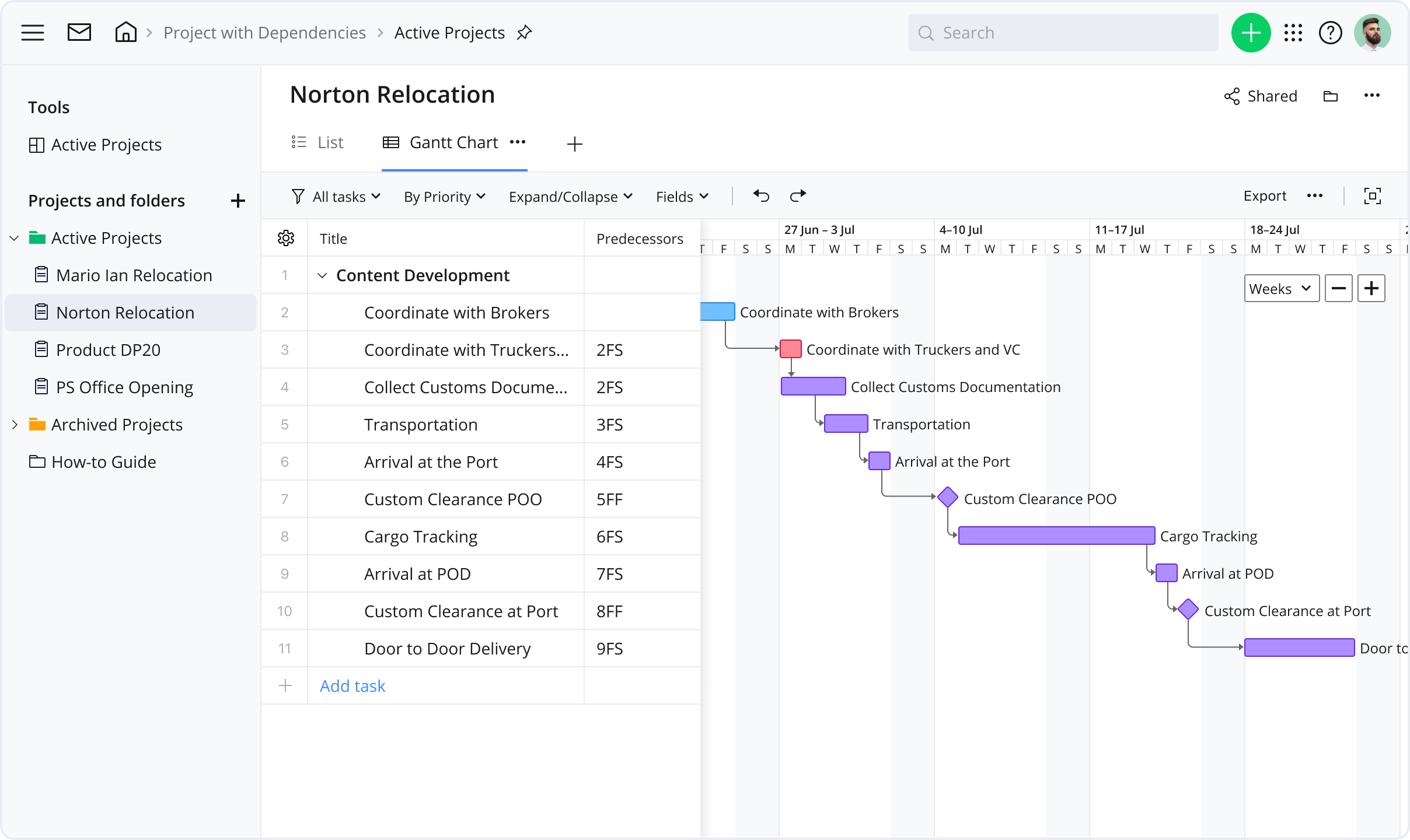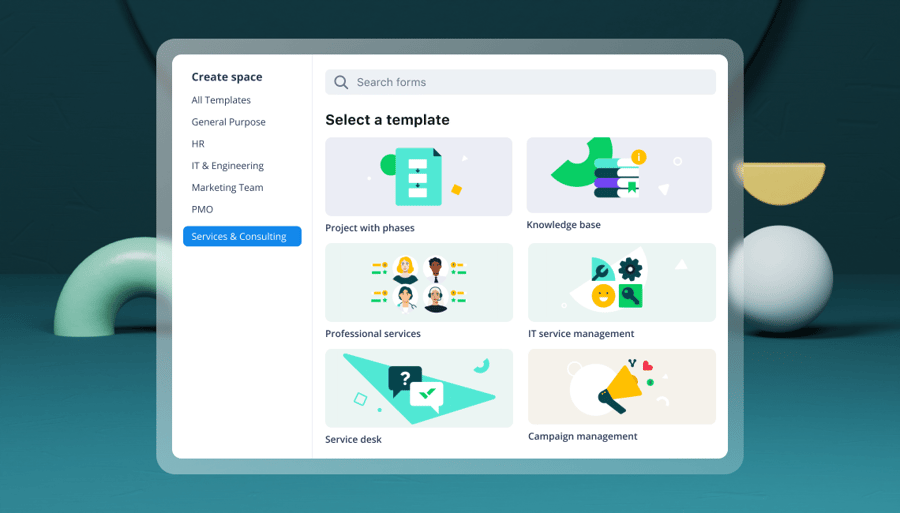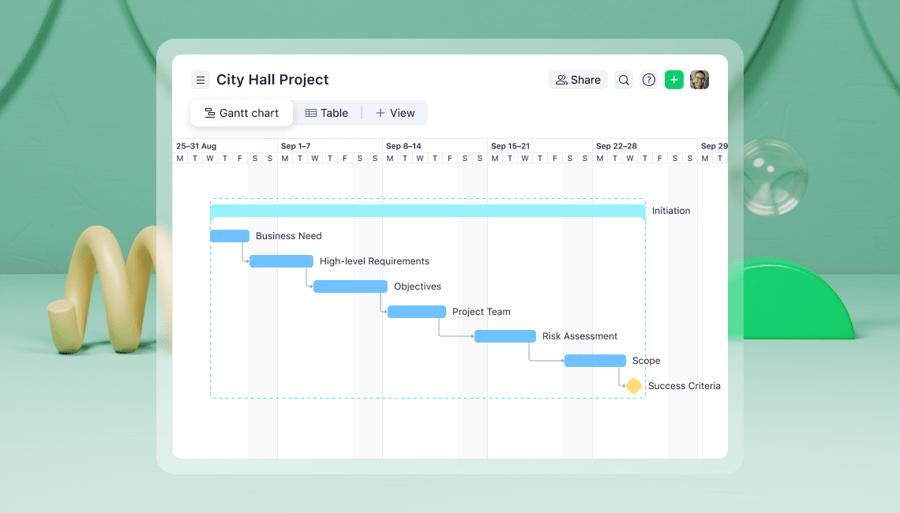Key takeaways:
- What is a project plan? A project plan outlines objectives, scope, schedule, assignments, and resources, serving as a blueprint for successful project execution.
- Why is project planning important? It ensures clarity, efficiency, improved communication, optimized resource allocation, and helps in tracking goals and minimizing risks.
- What are key elements of a successful project plan? Include project overview, scope statement, team roles, deliverables, deadlines, budget, risk management, quality standards, and communication plan.
- How is a project plan written? Follow six steps: identify team members, set goals, define deliverables, create a schedule, assess risks, and present to stakeholders.
- How can Wrike enhance project planning? Wrike provides tools like Gantt charts for visualization, task assignment, and real-time updates, streamlining project management effectively.
As a qualified project manager, there’s nothing quite like the buzz of starting a new project. I love the organizing phase: The new notebook, a clean slate in the project planning software, a team of new stakeholders as excited as me ...
OK, maybe I’m overselling it a bit. But the project initiation is a lot more than simply a time to establish project scope, crack open a new spreadsheet, and get straight to work. A project plan is a critical project management step, and skipping it will put the success of your project in jeopardy before it even kicks off. A project plan can show you the resources required, how long it will take to achieve, and help you avoid roadblocks that could throw you off schedule.
Ready to create a foolproof project management plan? This is Wrike’s guide to writing a successful project charter.
Can we skip to the good part? Yep! Start building your own project plan now with Wrike’s project scheduling template.
What is a project plan?
A project plan is a list of all the elements involved in a project, including the objective(s), scope, schedule, assignments, and resources. It explains what needs to be done in order to successfully execute a project. A project roadmap covers the entire project lifecycle and serves as your team’s blueprint.
Before starting a new project, large or small, every manager needs to get to grips with the following project elements:
- The objective: Project objectives state why the project should be completed, outlining the gains and purpose.
- What to do (scope): The scope is the list of tasks and activities, outlining what needs to be done to reach the project’s goal.
- When to do it (schedule): Next, your project timeline tells you when to start and finish each phase, including dates for deliverables and task dependencies.
- Who will do what (assignments and resources): Finally, resource allocation and assignments determine who is responsible for each task and how much time, money, or other resources are allocated to each activity.
What is project planning?
Project planning is the second phase of the project management lifecycle, after project initiation and before execution. This phase involves outlining your goals, project schedule, project budget, resources, and potential risks — giving your project a strong foundation to build on.
However, a project management plan isn’t merely a one-and-done item on your to-do list. Rather, a project plan should be a living document, updated regularly to reflect changes and progress. A lesson I’ve learned the hard way is that the planning phase really only ends when your project does.
Project planning in project management
Within the broader scope of project management, the planning phase is pivotal. It’s the bridge between the big-picture strategy and the practical, day-to-day execution. This is where your vision gets translated into timelines, task lists, and responsibilities.
During this project phase, project managers define goals, assign roles, build a timeline, allocate resources, identify risks, and create a communication plan. Done right, it brings structure to complexity and helps the team move forward with clarity.
Skipping or rushing through planning can lead to missed deadlines, scope creep, and frustrated stakeholders. But with a solid plan in place, you’re far more likely to stay on budget, deliver on time, and keep everyone aligned.
Why is a project plan important?
It’s simple: A well-structured project plan brings clarity and control to what can otherwise feel like a chaotic process.
| Benefit | Description |
| Provides clarity on how to proceed | Beginning with clear project objectives makes it easy to break a project down into smaller milestones to achieve a successful finish. |
| Makes project execution efficient | A thorough project charter saves costs and reduces errors by carefully allocating resources to stay on schedule and manage potential challenges. |
| Improves team communication | The communication plan, an integral part of the project plan, establishes channels and systems to keep team members and stakeholders aligned and informed. |
| Optimizes resource allocation | Project plans ensure the best use of resources by balancing competing needs, managing time and tasks, and reducing waste. |
| Facilitates goal tracking | A solid project plan outlines goals and key deliverables, making it easier to track progress and adjust course when needed. |
| Maintains alignment among team members | Detailed plans align teams and stakeholders by defining clear roles, responsibilities, and expectations. |
| Impacts employee retention | Well-defined plans reduce ambiguity and stress, improving the work environment and contributing to better employee retention. |
| Reduces project risk | Including a risk management plan in your initial stage helps identify potential risks early, enabling teams to put mitigation strategies in place and avoid costly setbacks. |
Tip: Use a work management platform like Wrike to help you create and organize your project plan, with Gantt charts to visualize the progress.
Key elements of a successful project plan
Below, we’ve compiled a list of the key elements of a project plan you’ll need to see your project to successful completion. Keep in mind that every project is different, and not everyone would require all the sections below.
- Project overview: A summary of the project, including its purpose, goals, and key stakeholders.
- Scope statement: This defines what the project will deliver and what it will not. It sets the boundaries for the project and prevents scope creep.
- List of team members, roles, and responsibilities: A directory keeps every stakeholder in the loop and communication easy.
- Work breakdown structure (WBS): This helps teams understand the work to be done and who is responsible for what.
- List of deliverables and deadlines: Having an overview of everything that needs to be completed provides a holistic view for stakeholders and team members.
- Project schedule: This provides a timeline for when each task is to be completed.
- Budget and resource plan: This outlines the costs and resources (including money, time, personnel, and tools) allocated to each task.
- Risk management plan: This identifies potential risks or issues that may arise during the project and outlines strategies to manage or mitigate them.
- Quality management plan: This sets the project quality standards and how they will be achieved and measured.
- Communication plan: This outlines how information will be shared among project team members and stakeholders, including what will be communicated, when, how, and to whom.
- Change management plan: This defines how changes to the project will be managed and controlled to keep the project on track.
- Project governance: This outlines the decision-making structures and processes for the project, including escalation paths for issues.
With a clear project plan, teams can monitor progress, align on shared goals, and remove the barriers that derail deadlines. Wrike makes this alignment intuitive, so everyone stays connected on one platform.

[With Wrike we’ve seen] probably an 85-90% reduction in the number of emails because everybody is working at the task level in Wrike and communicating with each other through @mentions.
Matt Andrews, Marketing Campaign Manager
How to write a project plan in 6 steps
Now that we’ve established the key elements and importance of a project plan, let’s discuss how to write one. Let’s walk through the six core project planning steps.
Step 1: Identify team members and meet with key stakeholders
The primary step is to get the team onboard and understand the broad purpose of your whole project.
Meet with project sponsors and key project stakeholders to discuss their needs and project expectations, and establish a scope baseline, budget, and timeline. Then, create a scope statement document to finalize and record project scope details, get everyone on the same page, and reduce the chances of costly miscommunication. Cost control is also critical during this stage of the process.
Here are some questions you should consider reviewing with stakeholders:
- How do we write a project plan that aligns with company goals?
- What do stakeholders expect? What will be expected from them?
- How will you measure project success?
- What are your resources and do you foresee any issues with resource management?
- What assets or deliverables are expected out of this project? What project documentation will support them?
- Are you managing multiple projects? If so, how will you balance your projects successfully?
Tip: Look beyond the stakeholders’ stated needs to identify the underlying desired benefits. These benefits are the objectives your project should deliver.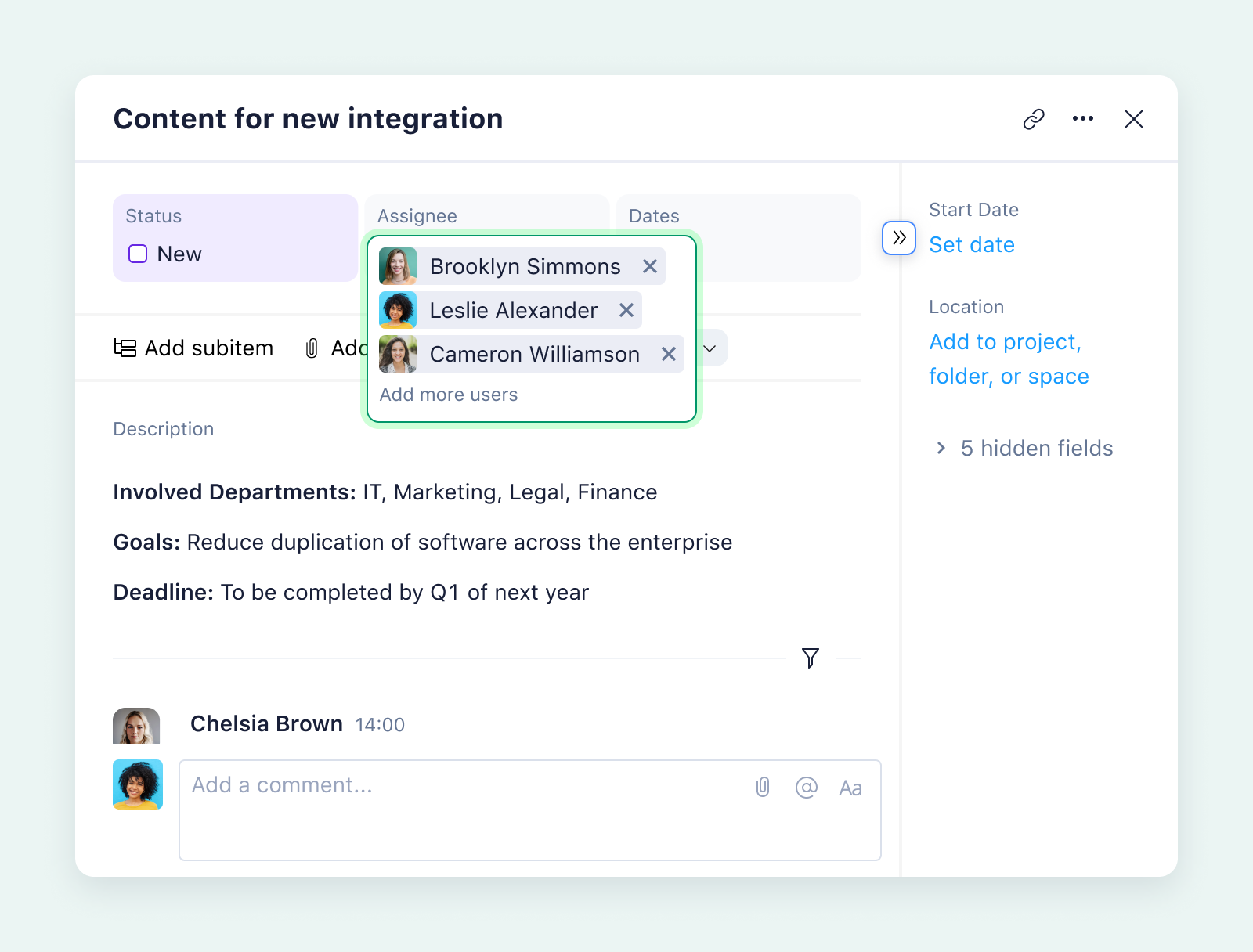
Step 2: Set and prioritize goals
Not all stakeholder needs are created equal, and it’s likely that resource constraints will prevent you from addressing all of them at the same time. Consider the impact, urgency, available resources, and any related risks or project dependencies.
Next, set specific project goals. Each goal should be clearly defined and aligned with at least one of the stakeholder needs. Use the SMART (Specific, Measurable, Achievable, Relevant, Time-bound) criteria to ensure each goal is clear and actionable. Then, set your project objectives and key results (OKRs).
Tip: If you’re having trouble prioritizing, start ranking goals based on urgency and importance, or check out these helpful decision-making tips.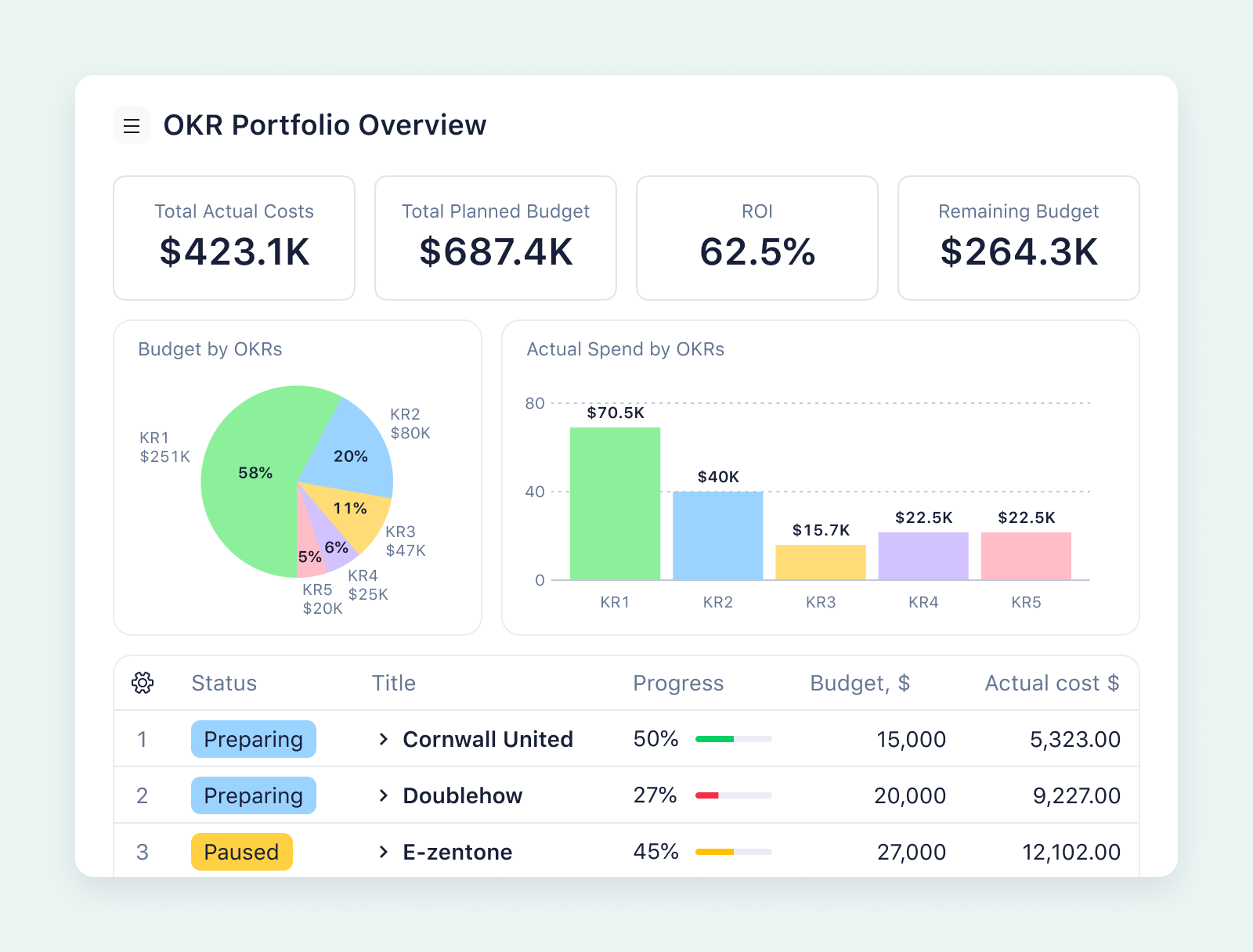
Step 3: Define project deliverables
Now, it’s time to start breaking down your project plan into bite-sized chunks. Identify the deliverables and project planning steps required to meet the project’s goals. What are the specific outputs the project team is expected to produce?
Next, estimate the due dates for each deliverable in your project plan (You can finalize these dates when you sit down to define your project schedule in the next step.).
Finally, work backwards. Think: If this project deliverable is due on this date, then these dependent tasks must be performed by this time. Remember, allocating contingency time for unexpected problems is a good idea.
Tip: Set firm milestones for essential deadlines and deliverables to stay on top of task management. Wrike is the perfect tool for this, with “MAX” due dates identified at the line level so every team member can prioritize effectively.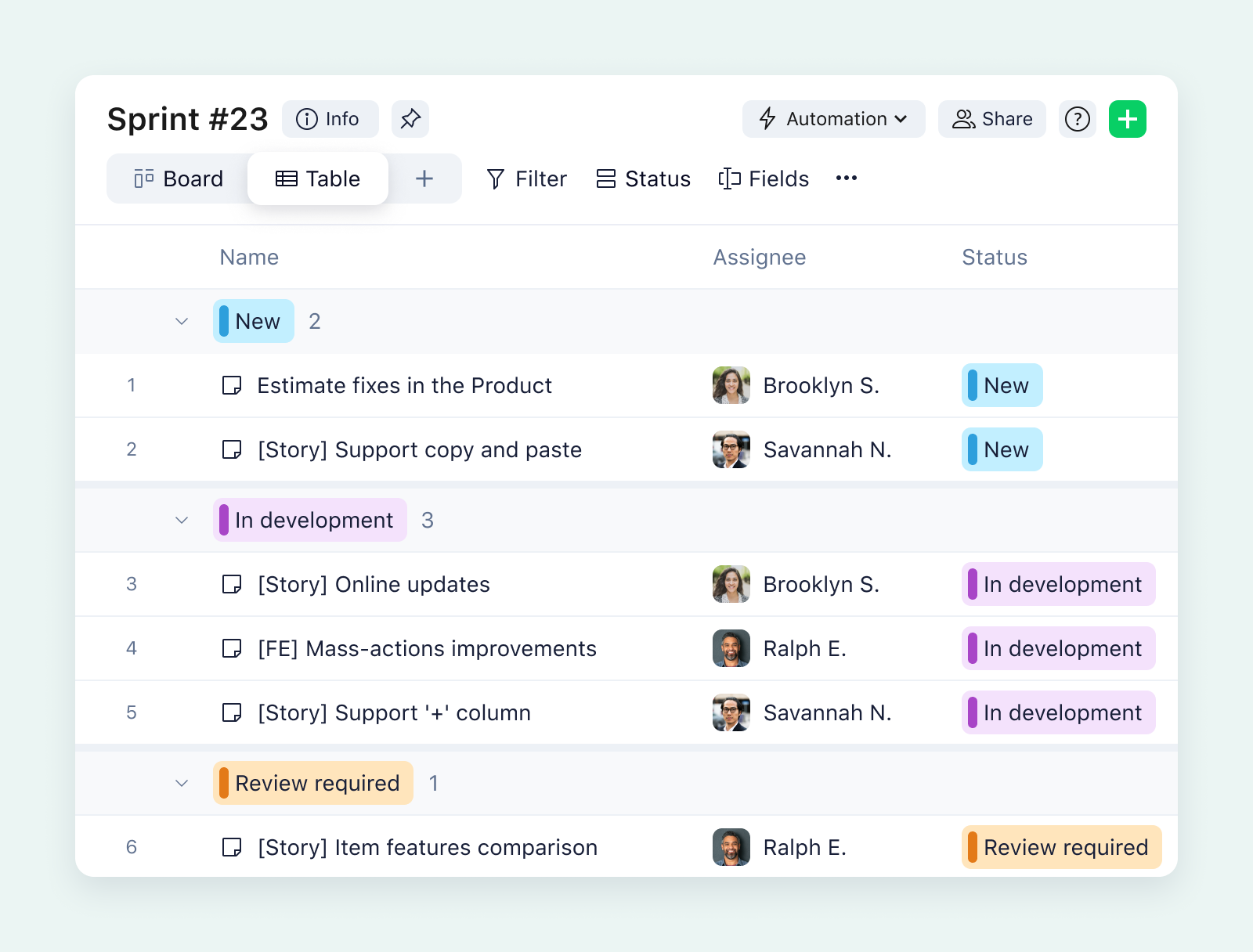
Step 4: Create the project schedule and organize tasks
Now that you’ve set your deliverables, it’s time to look at each milestone in depth and split it into individual tasks that can be allocated to each team member. For each task, determine the amount of time it will take, the resources necessary, and who will be responsible for execution.
Take each team member’s bandwidth into consideration before adding to their workload. Clarify the tasks, responsibilities, and expectations of each person. Some team members may be working on more than one team or project concurrently — and if projects aren’t aligned, stressful workloads cause delays and inefficiencies.
Tip: At this part of the project planning phase, involve your team in the process. The people performing the work have important insights into how tasks get done, how long they’ll take, and who’s the best person to tackle them.
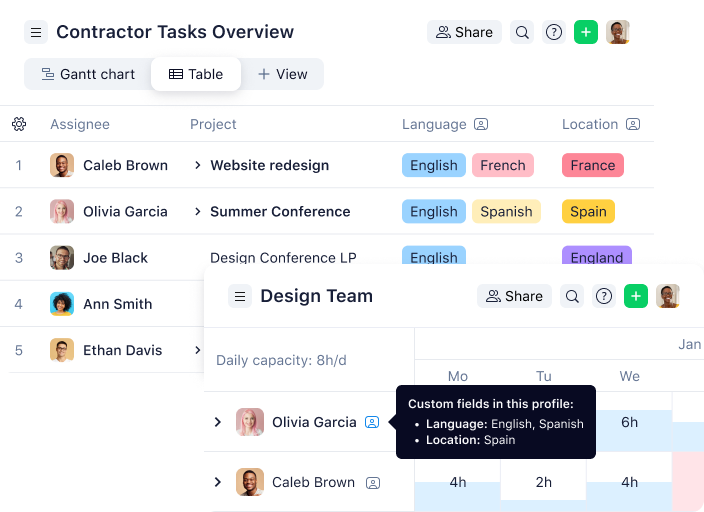
Step 5: Identify issues and complete a risk assessment
Even the best-laid project management plans get derailed sometimes. Are there any issues you know of upfront that will affect individual components of a project, like a key team member’s upcoming vacation? What unforeseen circumstances could create hiccups? (Think international holidays, back-ordered parts, or busy seasons.)
When developing a project plan, you should know how to manage risk in a project and consider the steps you should take to either prevent certain risks from happening or limit their negative impact. Conduct a risk assessment and develop a risk management strategy to prepare.
Projects don’t always go exactly as planned, but that doesn’t mean you have to derail your progress. You can use Wrike’s project planning tools to adapt to changes, reassign resources, and stay on track, even when challenges arise — so there are no barriers hindering the way your workflows.
Tip: Tackle high-risk items early in your project timeline, if possible. Or create a small time buffer around the task to help keep your project on track in the event of a delay.
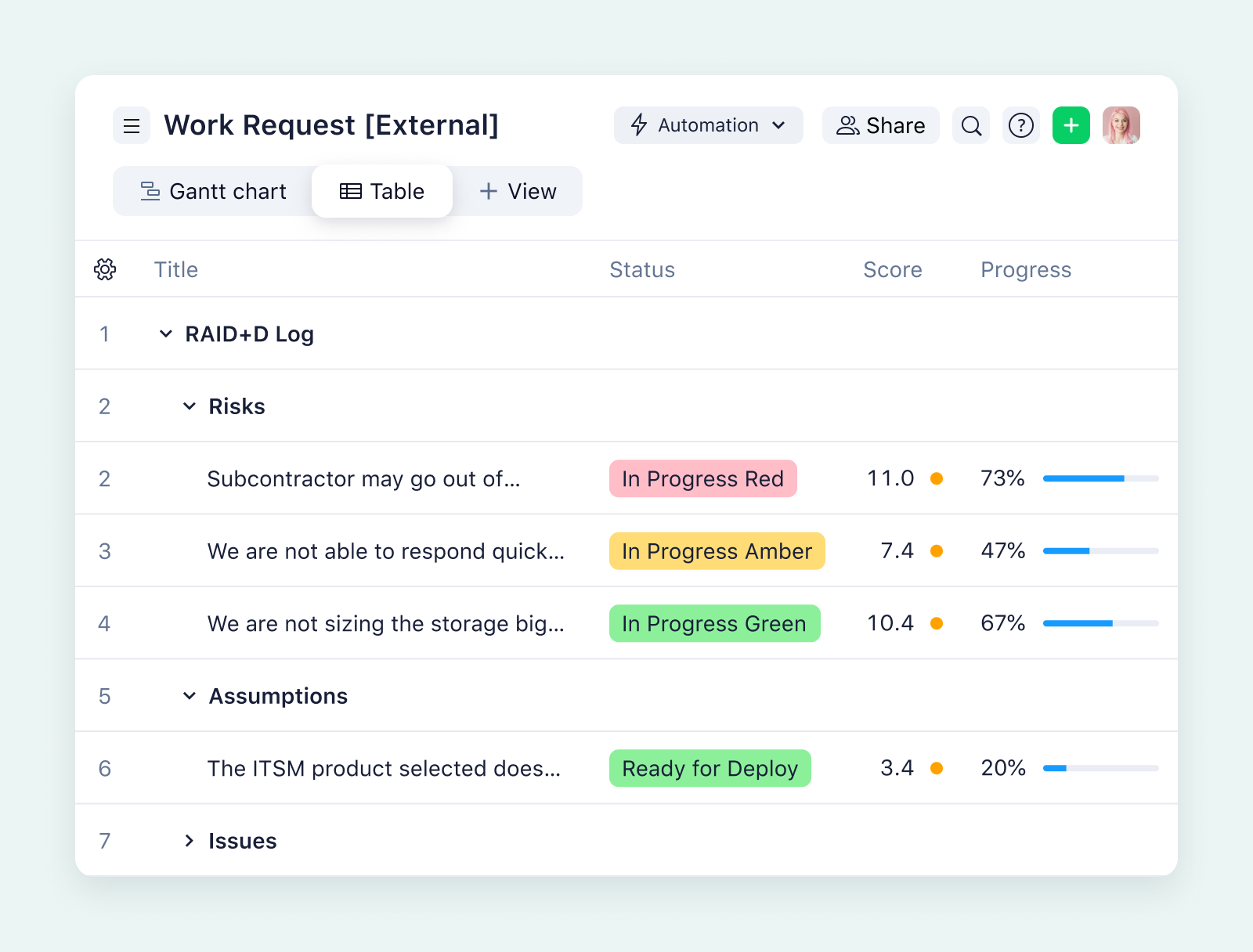
Step 6: Present the project plan to stakeholders
Finally, it’s time for the big reveal! Your plan is ready to be unveiled to the project team and put into practice.
As you present your project management plan, explain how it addresses stakeholders’ expectations and present your solutions to any conflicts. Make your project plan clear and accessible to all stakeholders so they don’t have to chase you down for simple updates. Housing all project plan data in a single location, like a Wrike team dashboard, makes it easy to track progress, share updates, and make edits without filling your calendar with meetings.
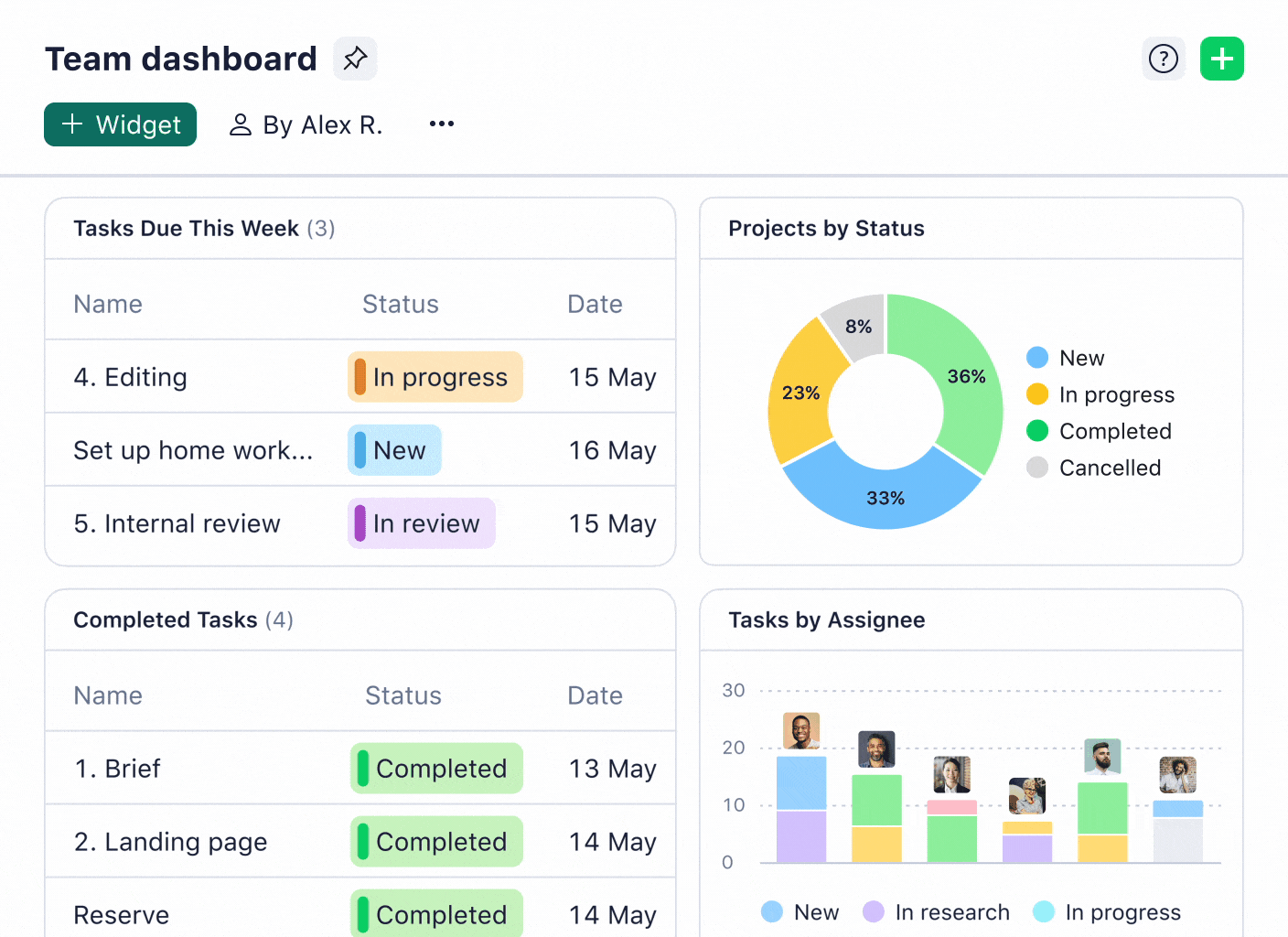
Not looking forward to staying on top of stakeholder management? Here are some strategies for working with difficult stakeholders to keep the project planning process moving forward.
Best practices to follow in the project planning phase
Even with the best project plan template in front of you, it’s easy to rush through planning and move straight into execution. However, slowing down at this stage is what sets the rest of the project up for success. Here are a few best practices to follow during the project planning phase:
| Best Practice | Description |
| Get stakeholder alignment early | Stakeholder management means confirming goals, scope, and success criteria with everyone involved in the project before moving forward. |
| Break work into manageable chunks | Use a work breakdown structure to divide the project into actionable tasks. This improves scheduling, accountability, and progress tracking. |
| Build in time buffers | As you assign tasks, add breathing room around high-risk or dependency-heavy tasks to accommodate unexpected delays. |
| Use one central source of truth | Store everything in Wrike to stay organized, keep data accessible, and avoid scattered information. |
| Make your communication plan explicit | Decide how updates will be shared, how often, and in what format to keep everyone informed and reduce unnecessary meetings. |
| Review and adjust as you go | Writing a project plan isn’t a one-and-done job. Regularly revisit your plan to update project timelines, reassign resources, and manage risks as the project evolves. |
Project plan examples
Below are two detailed project plan examples to show you what a real-world project plan looks like. If you’re searching for a sample project plan or project plan template, use these examples as a starting point.
Quarterly content project plan
This is a content project plan for a made-up fashion company called FashionCo.
Project overview
This project aims to develop and execute a content plan for FashionCo’s fall season. The project will promote the brand’s new collection, engage with customers, and drive sales from July to September 2025.
Scope statement
The project includes the ideation, creation, and distribution of content across various platforms. It includes blog posts, social media posts, email newsletters, and promotional videos. It does not include any PR activities or customer service-related communication.
Work breakdown structure
- Content ideation: Brainstorming themes, topics, and formats for content
- Content creation: Writing blog posts, designing social media posts, scripting and filming promotional videos, and drafting email newsletters
- Content distribution: Posting to various social media platforms, sending out email newsletters, and publishing blog posts
- Performance tracking: Monitoring and analyzing the performance of the content to inform future content plans
Project schedule
- Content ideation: July 2025
- Content creation: July — August 2025
- Content distribution: August — September 2025
- Performance tracking: September 2025
Budget and resource plan
The total budget for the project is $100,000. This will be allocated as follows:
- Content ideation: $10,000
- Content creation: $60,000
- Content distribution: $20,000
- Performance tracking: $10,000
Quality management plan
Each platform will have a content playbook guiding the publishing and performance-tracking activities. The content team will meet weekly for review and feedback sessions during the ideation, creation, and performance tracking periods.
Communication plan
The content team will hold weekly status meetings. Progress reports will be sent bi-monthly to involved stakeholders, and a monthly steering committee meeting will be held to share updates with senior management.
Change management plan
Any changes to the project scope, timeline, or budget must be proposed in writing and approved by the project manager and the steering committee.
Project governance
The project will be overseen by a steering committee that includes top executives and department heads from FashionCo. They will approve all key decisions and changes to the project. The project manager will manage the content team for the project and liaise with the steering committee.
Product launch
This is a product launch project plan for a fictional software company called ABC Tech.
Project overview
The objective of this project is to successfully launch ABC Tech’s new product, codenamed “Project Alpha.” The project will involve:
- Developing the software
- Testing it for quality
- Marketing it to the target audience
- Providing post-launch support
It is scheduled to run for 10 months, from July 2025 to April 2026.
Scope statement
The scope includes the design and development of “Project Alpha,” extensive testing, marketing materials creation, customer service staff training for post-launch support, and actual product launch.
It does not include any updates or revisions post-launch, as those will be handled as separate projects.
Work breakdown structure
- Software development: Design, coding, and testing of “Project Alpha”
- Marketing: Market research, marketing strategy, creation of promotional materials, and advertising
- Customer service training: Training materials development and training sessions for customer service staff
- Product launch: Event planning, invitations, and execution of the event
Schedule
- Software development: July — October 2025
- Marketing (concurrently with final software testing): November 2025
- Customer service training: December 2025
- Product launch preparation and execution: January — April 2026
Budget and resource plan
The total budget for the project is $1,000,000. This will be allocated as follows:
- Software development: $400,000
- Marketing: $300,000
- Customer service training: $100,000
- Product launch: $200,000
Quality management plan
Quality will be ensured through regular code reviews during development and extensive software testing, including unit tests, integration tests, and user acceptance tests. There will be bi-monthly review meetings to assess the quality of all other aspects of the project, such as marketing materials and training effectiveness.
Communication plan
Monthly project status meetings will be held with all key stakeholders. The project manager will gather weekly updates from team leads and send a weekly progress report to stakeholders.
Change management plan
The project manager will maintain a change log to record all changes and their impact on the project. Any changes to the project scope, timeline, or budget must be approved by the steering committee.
Project governance
The project will be overseen by the steering committee, which includes selected members from the contributing teams of “Project Alpha.”
How to create a project plan in Wrike
If you’re tired of juggling spreadsheets, email chains, and status update meetings, Wrike’s project planning tools are a breath of fresh air. Whether you’re managing a client campaign, a product launch, or a cross-functional project, Wrike helps you break down your work into clear, trackable steps.
Let’s walk through how to build a solid project plan using Wrike’s project scheduling template:
Break your work into tasks
Start by outlining your project deliverables, then break them into tasks. Assign each task to the right person, set due dates, and add any key details. That way, in one easy glance, everyone knows what they’re working on, and nothing slips through the cracks.
Visualize your timeline with Gantt charts
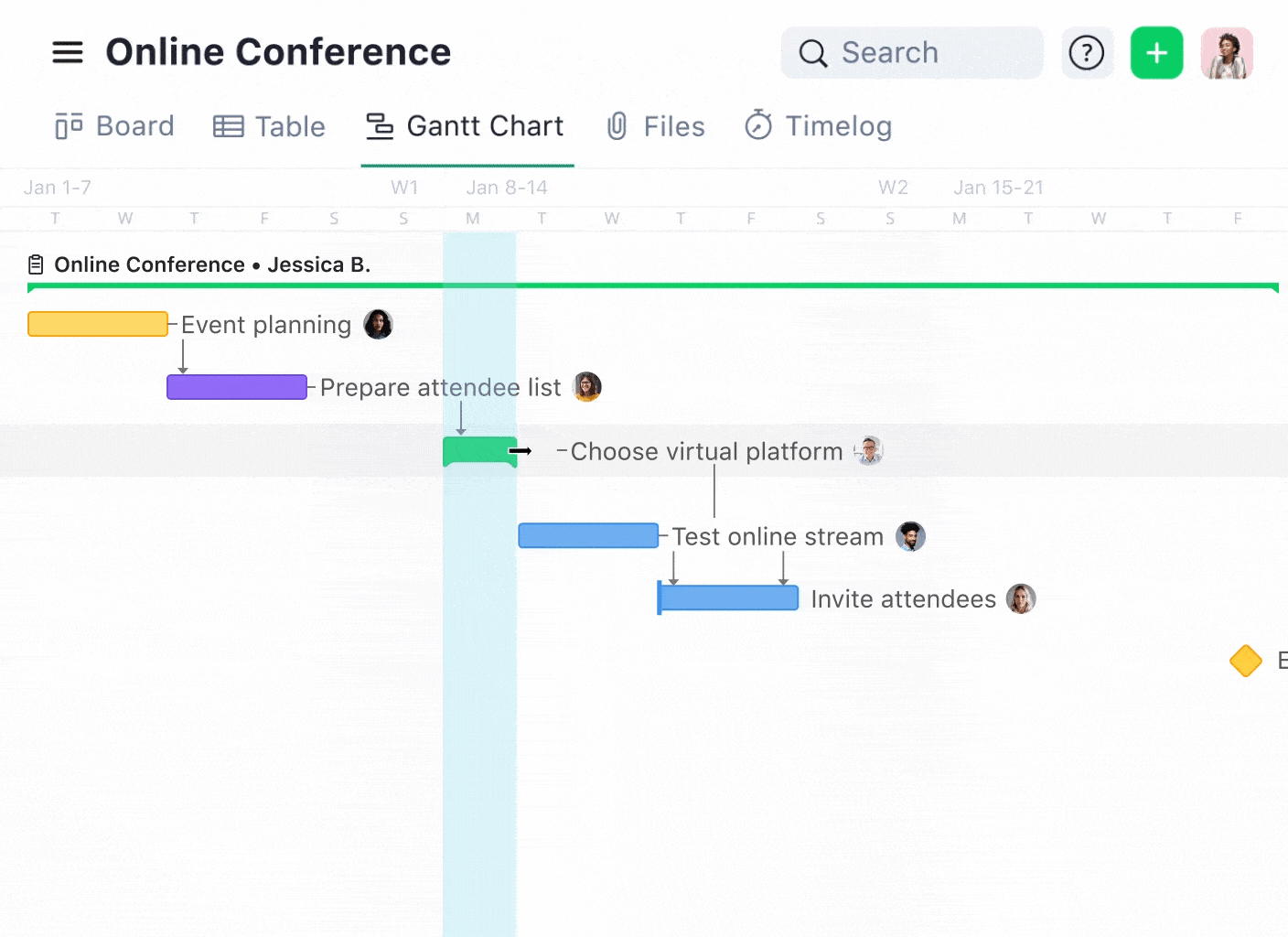
Switch to Wrike’s Gantt Chart view to see how your project plays out over time. When you input deliverables, dependencies, and milestones into a Gantt chart on Wrike, you can easily adjust timelines by dragging tasks across your screen — no messy rework or tedious Excel formatting required.
Track dependencies
Easily link related tasks so your project team knows which actions come first — and what’s waiting on what. Wrike automatically updates your timeline when things shift, keeping everyone in sync.

[Wrike makes it easy to] see the dependencies at a glance and know if you’re going to meet your deadline or hold someone up on the next step.
Matt Andrews, Marketing Campaign Manager
Customize your dashboard
Stay focused with real-time dashboards that show exactly what you need — whether that’s overdue project tasks, upcoming milestones, or an entire project status. Use prebuilt widgets or choose a custom project view to match how you work best.
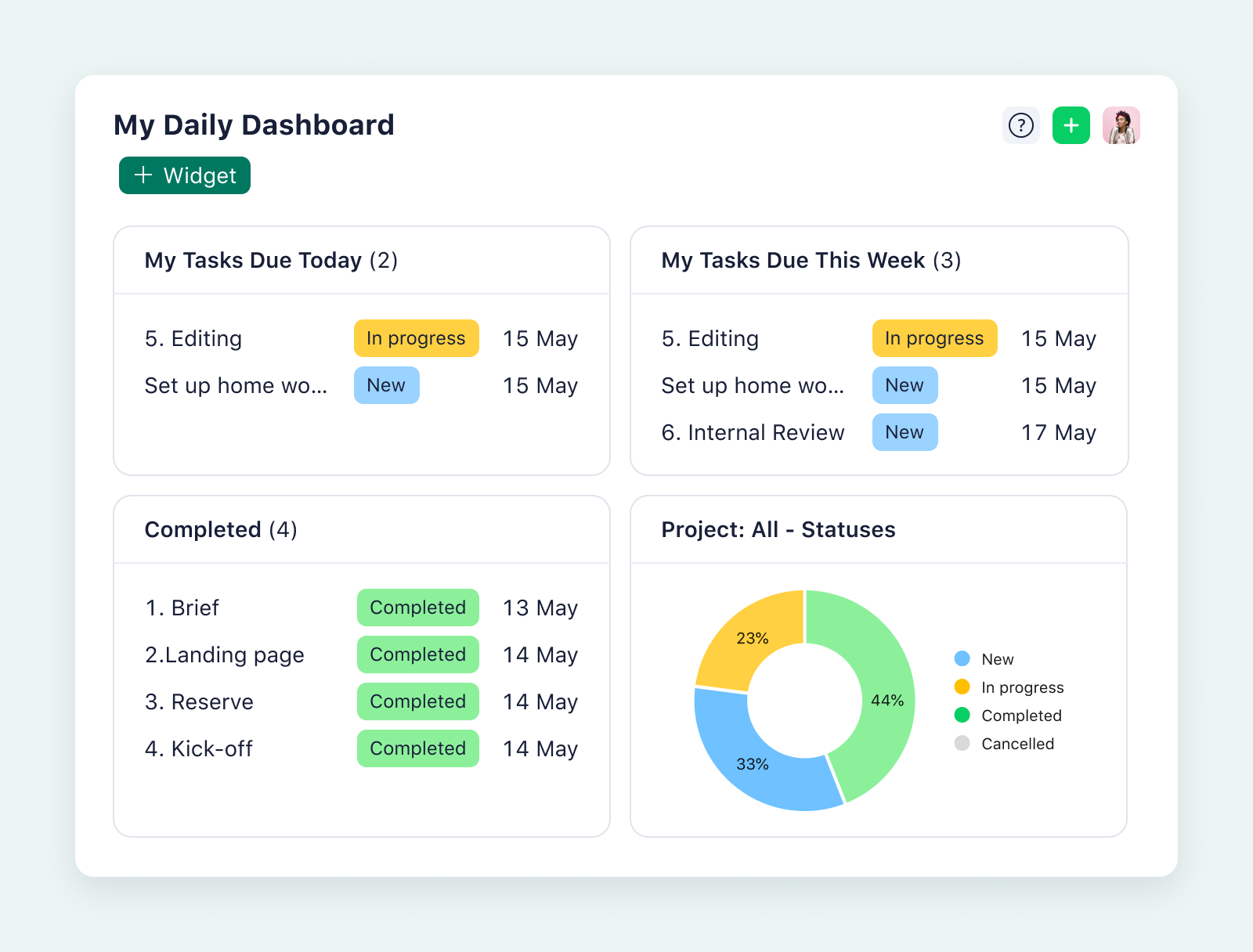
FAQs
What is a popular tool for planning and scheduling simple projects?
A popular tool for planning and scheduling simple projects is Wrike. It offers user-friendly features like task lists, timelines, and dashboards, making it easy to assign responsibilities, set deadlines, and monitor progress — all in one place.
What does a project plan look like?
A detailed project plan typically outlines the project’s objectives, key tasks, timelines, assigned roles, resources, and communication approach. In Wrike, this might look like a combination of task lists, Gantt charts, and shared dashboards that give everyone visibility into the project’s progress and next steps.
What are the 7 steps of project planning?
The seven key steps to create a project plan typically include:
- Define the project scope
- Identify stakeholders
- Set project goals and objectives
- Create a schedule to see how the project progresses
- Assign roles and responsibilities
- Allocate project resources and budget
- Develop a communication plan for updates, feedback, and changes
Can AI create a project plan?
Absolutely! AI can create a project management plan by analyzing inputs like goals, deadlines, and available resources. It can process project data to suggest task breakdowns, set realistic timelines, and allocate resources efficiently. Some AI tools, like Wrike’s Work Intelligence® even adjust the plan in real time based on progress updates, assessing risks, or delays.
However, while AI can significantly speed up the planning process, human touchpoints are still important for an effective project planning process, sanity-testing output, and working on communicating clearly.
Can you create a project plan in Excel?
Yes, you can create a project management plan in Excel. You can add start and end dates, assign responsibilities, and track progress with conditional formatting or simple formulas. For a visual timeline, many people create Gantt charts using Excel’s bar chart features.
That said, for more complex projects or real-time collaboration, Wrike is a project planning software that offers built-in templates, interactive timelines, and team dashboards that go beyond what Excel can easily manage.


